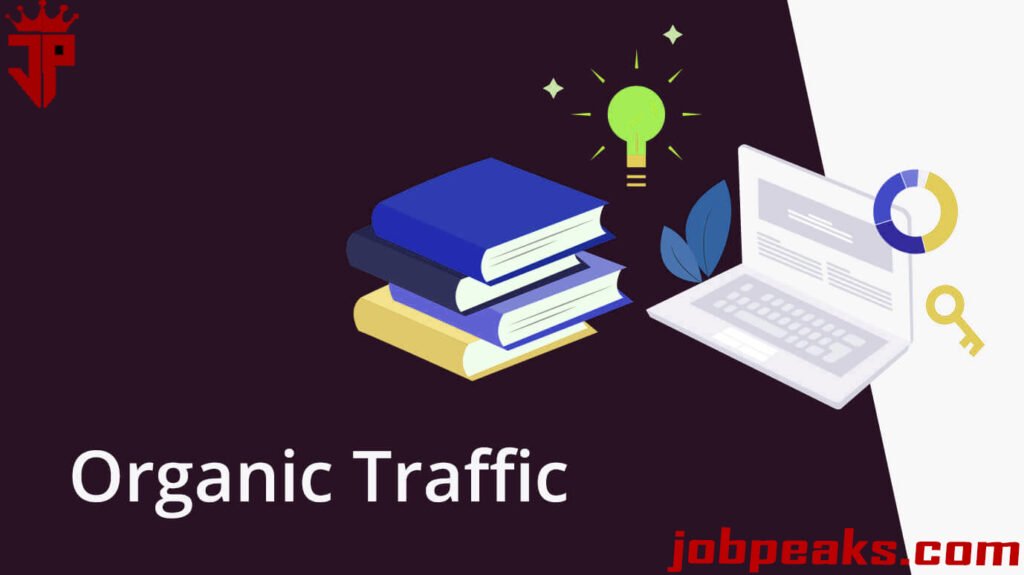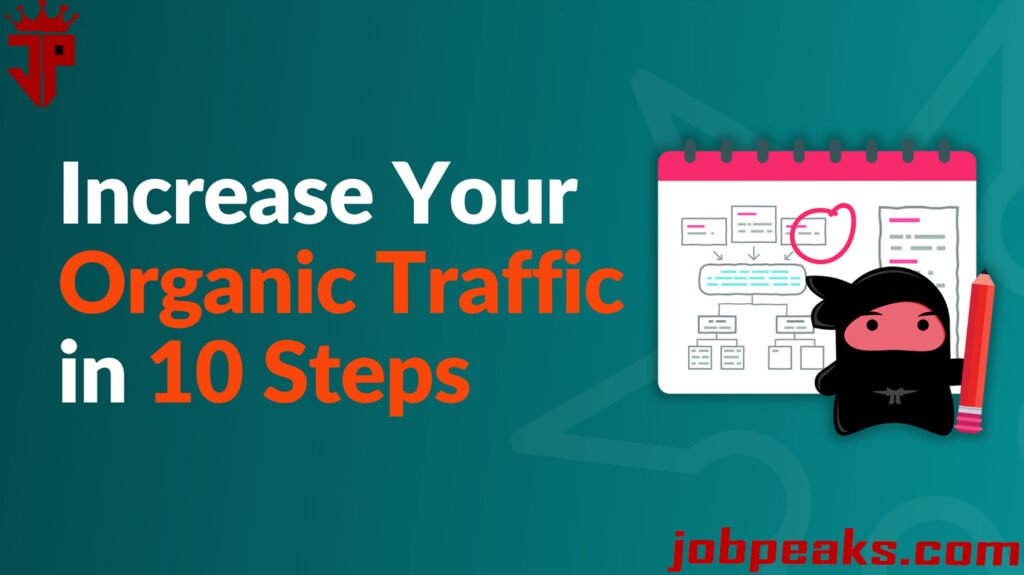
Organic traffic refers to the visitors that land on a website as a result of unpaid search engine results. Unlike paid traffic, which is generated through advertisements, organic traffic is derived from a website’s visibility in search engine results pages (SERPs). This visibility is primarily achieved through search engine optimization (SEO) practices, which improve a site’s ranking for relevant queries. When a website ranks higher in SERPs, it attracts more users who are actively searching for the information, products, or services it offers.
The significance of organic traffic cannot be overstated. For one, it not only brings in a higher volume of visitors but also tends to offer improved engagement rates, as users who arrive via organic results are often more intent on finding specific information. Unlike visitors who may come through paid ads, organic traffic typically consists of individuals seeking out content directly related to their interests, leading to better conversion rates. Moreover, since organic traffic does not rely on ongoing ad spend, it presents a more cost-effective long-term strategy for building website visibility and attracting an audience.
In addition to its economic benefits, organic traffic fosters credibility for a website. Users often perceive organic search results as more trustworthy compared to paid ads. Consequently, businesses that rely on organic traffic may cultivate a positive reputation among their target audience, leading to increased brand loyalty and customer retention. The sustainability of organic traffic is another advantage to consider; while ad campaigns must be continuously funded for ongoing traffic, SEO efforts can produce lasting results, ensuring that well-optimized content remains discoverable over time. By prioritizing organic traffic, website owners can build a robust traffic base that contributes to long-term success without the burden of constant financial investment in advertisements.
Keyword Research: The Foundation of Organic Traffic
Keyword research is an essential component for driving organic website traffic. It provides a blueprint for creating content that resonates with a target audience, ultimately leading to higher search engine rankings and increased visibility. A well-executed keyword research strategy involves identifying keywords that not only have substantial search volume but also exhibit low competition. This balance is crucial for enhancing the potential to attract visitors without competing directly with well-established websites.
One effective method for conducting keyword research is utilizing tools such as Google Keyword Planner, SEMrush, or Ahrefs. These platforms allow users to discover keywords relevant to their niche, alongside valuable metrics like search volume, competition level, and trends. By analyzing this data, website owners can pinpoint the most effective keywords to target, ensuring that the content created aligns with the interests and needs of potential visitors.
Moreover, incorporating long-tail keywords, or phrases that consist of three or more words, can be particularly beneficial. These keywords often attract a more specific audience looking for detailed information or solutions related to their queries. For instance, rather than targeting a broad keyword like “shoes,” a more specific long-tail keyword such as “comfortable running shoes for flat feet” may yield better results in terms of attracting the right visitors.
Once high-potential keywords are identified, it is imperative to strategically implement them throughout the website content. This includes integrating keywords within titles, headings, meta descriptions, and body text to enhance search engine optimization (SEO). However, it is important to maintain natural language and avoid keyword stuffing, which can negatively impact readability and user experience.
Incorporating keyword research as a fundamental practice allows website owners to create content that meets user needs while remaining aligned with search engine algorithms. This foundation not only aids in attracting organic traffic but also fosters long-term growth and sustainability for the website’s overall presence in search results.
Creating High-Quality, Engaging Content
Creating high-quality, engaging content is fundamental to attracting organic traffic to a website. Search engines prioritize valuable and informative content that satisfies user intent, making it essential for webmasters to ensure their content meets these criteria. Start by identifying your target audience and understanding their needs, preferences, and challenges. This insight should guide you in developing content that provides real solutions and engages the reader effectively.
To produce valuable content, consider incorporating thorough research that enhances credibility. Citing reputable sources, including data, and addressing common questions or pain points can significantly increase the quality of your posts. Additionally, using a clear and concise writing style helps maintain reader interest and ensures that your messages are easily understood. It is important to remember that your audience is looking for information that is not only relevant but also actionable.
Diversity in content format can further boost engagement and cater to different learning styles. Consider creating a mix of blog posts, videos, infographics, and podcasts to appeal to a wider audience. This variety can also enhance the sharing potential of your content across various platforms, resulting in increased organic reach. Regularly updating existing content is equally important, as it demonstrates to search engines that your information is current and relevant, further enhancing your SEO efforts.
Moreover, crafting compelling headlines and subheadings will attract users’ attention in a crowded online landscape. Ensure that your content also encourages user interaction, whether through comments, shares, or links. Engaging with your audience fosters a community around your brand, promoting return visits and further organic traffic growth. By prioritizing high-quality, engaging content, you can create a sustainable strategy that not only attracts new visitors but also retains existing ones.

Optimizing On-Page SEO
On-page SEO is an essential component for any website looking to enhance its organic traffic. By optimizing various elements on individual web pages, website owners can significantly improve their visibility in search engine results. One of the fundamental aspects of on-page SEO is the title tag. This HTML element should effectively summarize the content of the page, incorporating the primary keywords while remaining engaging to entice users to click through. A well-crafted title tag not only aids search engines in understanding page relevance but also improves user experience.
Meta descriptions also play a critical role in attracting clicks through the search results page. Although they do not directly influence search rankings, an informative and compelling meta description can enhance click-through rates by providing a concise summary of the page’s content. It is beneficial to keep these under 160 characters to ensure they display correctly across different search engines.
Header tags, particularly H1, H2, and H3, help organize content logically and make it easier for both users and search engines to navigate your site. Utilizing these tags effectively allows you to highlight key points and keywords throughout the content, improving its contextual relevance. Additionally, incorporating image alt texts helps search engines understand the content of your images, which can contribute to improved rankings in image searches and caters to accessibility needs.
Another vital on-page SEO technique is internal linking, which supports user navigation and enhances site architecture. Internal links allow search engine crawlers to navigate and index your site more efficiently, creating a better user experience and potentially boosting organic traffic. Finally, ensuring a user-friendly site structure, with fast loading times and mobile optimization, is crucial, as these factors directly impact user engagement and retention. By applying these on-page optimization techniques, websites can significantly increase their organic visibility without relying on paid advertising.
Leveraging Social Media for Visibility
In today’s digital landscape, social media has become an indispensable tool for driving organic traffic to websites. By leveraging various social media platforms, businesses and content creators can enhance their visibility and foster a community of followers who are genuinely interested in their offerings. Sharing content across these platforms is a fundamental strategy that can significantly increase website visits. Every time an article or blog post is shared, it has the potential to reach a wider audience, drawing in users who may not have encountered the content otherwise.
Engagement with followers is equally vital. By responding to comments, answering questions, and participating in discussions, brands can build a rapport with their audience. This connection not only encourages loyalty but also enhances the likelihood of users sharing the content within their networks, thereby amplifying organic reach. Furthermore, utilizing specific hashtags related to the content being shared can categorize posts effectively, making them more discoverable by users searching for those topics. The careful selection of relevant hashtags can lead to increased engagement and, ultimately, higher organic traffic to the website.
Moreover, there is a synergistic relationship between social media presence and search engine optimization (SEO) performance. Search engines tend to favor websites that demonstrate credibility and relevance, metrics that can be impacted positively by a robust social media strategy. For instance, the more your content gets shared and linked to on social media, the more likely it is that search engines will recognize it as valuable, potentially improving its ranking in search results. Therefore, integrating social media efforts into an overall traffic-enhancing strategy not only increases visibility but can also contribute to better SEO outcomes, further solidifying the importance of this approach in driving organic traffic.
Building Backlinks: A Key to Authority
Backlinks, or inbound links that direct traffic to your website from other sites, play an essential role in increasing a website’s authority and improving its organic traffic. Search engines like Google consider backlinks as votes of confidence; the more high-quality backlinks a site has, the more likely it is to rank higher on search results. This makes backlinking a crucial strategy for driving organic traffic without the need for paid ads.
One effective way to acquire high-quality backlinks is through guest posting. By writing informative articles for reputable websites in your niche, you can attract their audience to your own site. This not only establishes you as an authority but also provides a valuable backlink. It is vital, however, to ensure that the hosting site has a good reputation and is relevant to your field. This approach builds credibility and enhances your visibility in search engine rankings.
Another strategy involves forming partnerships with other webmasters and brands. Collaborative projects such as co-authoring a paper or creating an e-book can generate mutual backlinks, benefiting both parties involved. Moreover, fostering relationships within your industry can pave the way for natural backlinking as others may link to your content in their material.
Additionally, creating shareable content is important for attracting backlinks. Content such as infographics, original research, and video tutorials can be incredibly magnetic due to their visual appeal and informative nature. If others find your content valuable, they are more likely to link to it from their own sites, further enhancing your site’s authority.
Conversely, managing toxic backlinks is also crucial. These are links from low-quality or spammy sites that can harm your website’s reputation and ranking. Identifying and disavowing these harmful links is essential for maintaining a healthy backlink profile, ensuring higher visibility and organic growth.

Enhancing User Experience (UX) and Site Performance
In the digital landscape, enhancing user experience (UX) and ensuring robust site performance are pivotal in attracting and retaining organic traffic. A well-designed website can make a significant difference in how users engage with content. One critical aspect to consider is site speed. According to research, users expect a web page to load in two seconds or less; if it takes longer, there is a high likelihood they will abandon the site. Optimizing images, leveraging browser caching, and minimizing HTTP requests are effective techniques to accelerate load times and improve overall site performance.
Mobile responsiveness is another crucial element in enhancing user experience. With a significant portion of web traffic originating from mobile devices, ensuring that your site is adaptable across various screen sizes is essential. This can be achieved by employing a responsive design framework that adjusts the layout and content according to the user’s device. Moreover, optimizing touch elements and ensuring that text is legible on smaller screens will help in creating a more user-friendly environment.
Navigational ease plays a substantial role in user experience as well. Users should be able to find the information they need quickly and effortlessly. Implementing a clear and intuitive navigation structure not only improves site usability but also decreases bounce rates, which can positively affect organic traffic. Additionally, an aesthetically pleasing website design can keep users engaged longer. Utilizing a cohesive color scheme, visually appealing graphics, and a clean layout can stimulate user interest and encourage exploration across your site.
By focusing on these key areas—site speed, mobile responsiveness, navigational ease, and overall aesthetics—webmasters can significantly enhance user experience and create a platform conducive to attracting and retaining organic traffic. Often, these improvements lead to increased user satisfaction and a higher likelihood of return visits.
Utilizing Analytics for Continuous Improvement
In the quest to enhance organic website traffic, the utilization of analytics is crucial. Analyzing website traffic data allows for the identification of trends and opportunities that can significantly influence optimization strategies. By leveraging analytics tools, particularly Google Analytics, businesses can gather valuable insights pertaining to user interactions on their websites.
Google Analytics offers a comprehensive suite of metrics that can be interpreted to evaluate website performance. Key metrics including bounce rates, session durations, and user behavior patterns play a pivotal role in understanding how visitors engage with content. For instance, a high bounce rate may indicate that visitors are not finding relevant information, prompting the need to revisit home page content or streamline navigation. Conversely, a lengthy session duration often suggests that users are increasingly interested in the content provided, indicating successful engagement.
To effectively utilize analytics for continuous improvement, it is imperative to set specific goals aligned with business objectives. By defining what constitutes success—be it increased page views, reduced bounce rates, or improved conversion rates—one can tailor strategies accordingly. Regularly monitoring these metrics allows for timely adjustments to content and marketing efforts.
Moreover, interpreting user behavior through heatmaps and flow analysis can offer deeper insights into the customer journey. Understanding the path users take through a website and identifying exit points are instrumental in refining user experience. Such data-driven adjustments can lead to optimized content that resonates better with the target audience, consequently driving more organic traffic.
In summary, leveraging analytics is indispensable for the continuous improvement of organic website traffic strategies. By interpreting and acting upon insightful data, businesses can enhance user experience and ultimately achieve their traffic goals effectively.

Networking and Community Engagement
Building relationships and engaging with communities within your niche can significantly enhance your ability to drive organic traffic to your website. Networking offers an excellent opportunity to connect with industry influencers who can amplify your reach. Beginning with platforms such as LinkedIn and Twitter, you can follow key figures in your industry, participate in discussions, and share your insights, which may motivate them to engage with your content or share it with their followers. Establishing rapport through genuine interactions can lead to backlinks and referrals, ultimately increasing your website’s visibility.
Another effective method of networking involves participation in relevant forums and discussion boards. By contributing thoughtful responses and insights, you can position yourself as an authority in your niche. Websites like Reddit and Quora are excellent platforms for engaging directly with users seeking advice or solutions in your field. Providing comprehensive answers that link back to your site, when appropriate, can enhance your credibility while driving targeted traffic. Additionally, consider participating in niche-specific online communities where members share interests similar to your content. Engaging actively in these spaces can yield double benefits: fostering relationships and attracting visitors to your website.
Feedback plays a crucial role in improving content and visibility. Engaging with your audience through surveys or comment sections on your website can offer valuable insights into their preferences and needs. This interaction not only makes your audience feel valued but also helps you refine your content to better serve them. Furthermore, consider collaborating with other content creators or bloggers in your niche to leverage each other’s communities. Joint ventures, guest blogging, or co-hosting webinars can introduce your site to a broader audience, leading to an increase in organic traffic. Fostering these connections and investing time in community engagement can yield substantial long-term benefits for your website’s traffic and visibility.






